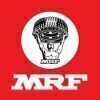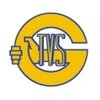Filter interviews by
Yazaki Supplier Quality Assurance Engineer Interview Questions and Answers for Freshers
Yazaki Supplier Quality Assurance Engineer Interview Experiences for Freshers
1 interview found
I applied via Campus Placement and was interviewed in May 2021. There was 1 interview round.
Interview Questionnaire
3 Questions
- Q1. 1- introduction
- Q2. 2- some Electrical measuring instruments name.
- Q3. 3- basic subject questions
Interview Preparation Tips
Always think I will face the questions and try to answer if I fail to answer then say sorry sir I didn't know.
Top trending discussions






Interview questions from similar companies

Assistant Engineer Interview Questions & Answers
Samvardhana Motherson Groupposted on 27 May 2022
I applied via Campus Placement and was interviewed before May 2021. There was 1 interview round.
(2 Questions)
- Q1. How the working culture of mssl
- Ans.
The working culture at MSSL is collaborative, innovative, and focused on continuous improvement.
MSSL encourages teamwork and open communication among employees.
The company values creativity and encourages employees to think outside the box.
Continuous learning and development opportunities are provided to employees.
MSSL has a strong focus on quality and customer satisfaction.
The company promotes a healthy work-life bala
- Q2. Mssl working experience is good.. all are systematic work.. good communication. Team work..
Interview Preparation Tips

Junior Engineer Interview Questions & Answers
Samvardhana Motherson Groupposted on 13 Apr 2022
I applied via Campus Placement and was interviewed before Apr 2021. There were 2 interview rounds.
Journal knowledge of plastic raw material and their defect
(5 Questions)
- Q1. Why should we hire you?
- Q2. Why are you looking for a change?
- Q3. Where do you see yourself in 5 years?
- Q4. What are your strengths and weaknesses?
- Q5. Tell me about yourself.
Interview Preparation Tips

Assistant Engineer Interview Questions & Answers
Samvardhana Motherson Groupposted on 26 Nov 2017
Interview Questionnaire
2 Questions
- Q1. What is the use of combination set?
- Ans.
A combination set is a tool used for measuring and marking angles, distances, and depths accurately.
Combination sets are commonly used in engineering and construction.
They typically include a protractor, ruler, and depth gauge.
The protractor is used to measure and mark angles.
The ruler is used to measure and mark distances.
The depth gauge is used to measure and mark depths.
Combination sets are versatile and can be used...
- Q2. How many types of CNC controls units?
- Ans.
There are several types of CNC control units used in engineering.
There are three main types of CNC control units: open-loop, closed-loop, and computer numerical control (CNC).
Open-loop control units are the simplest and least expensive, but they do not provide feedback on the actual position of the machine.
Closed-loop control units use feedback sensors to continuously monitor and adjust the position of the machine, res...
Interview Preparation Tips
Experience: I have answered all the questions sucessfully....
Tips: confidentely

Quality Engineer Interview Questions & Answers
Samvardhana Motherson Groupposted on 26 May 2020
I applied via Walk-in and was interviewed in Apr 2020. There were 3 interview rounds.
Interview Questionnaire
3 Questions
- Q1. 7 QC tools?
- Ans.
The 7 QC tools are a set of basic quality control tools used to identify and solve quality problems.
Check sheets
Control charts
Histograms
Pareto charts
Scatter diagrams
Stratification
Cause-and-effect diagrams
- Q2. Roles & Responsibilities on previous company?
- Ans.
As a Quality Engineer in my previous company, I was responsible for ensuring product quality, conducting audits, and implementing quality control processes.
Conducted product quality inspections and audits
Implemented quality control processes to improve product quality
Analyzed data to identify areas for improvement
Collaborated with cross-functional teams to address quality issues
Ensured compliance with industry standard
- Q3. QA & QC Difference?
- Ans.
QA focuses on preventing defects while QC focuses on identifying and fixing defects.
QA is a proactive process that involves planning, designing, and executing tests to prevent defects from occurring.
QC is a reactive process that involves identifying defects through testing and then fixing them.
QA is focused on the entire software development life cycle while QC is focused on the testing phase.
Examples of QA activities ...
Interview Preparation Tips

I applied via Walk-in and was interviewed in Oct 2023. There were 3 interview rounds.

(2 Questions)
- Q1. What is the function of alternator &stator
- Ans.
The alternator generates electricity to power the vehicle's electrical system, while the stator is a stationary component that helps produce electricity in the alternator.
Alternator converts mechanical energy into electrical energy
Stator is a stationary part of the alternator
Stator contains wire windings that produce electricity when the rotor spins
Alternator charges the battery and powers the electrical system of the
- Q2. What is winding
- Ans.
Winding is the process of wrapping a material around a core or spool to create a coil or roll.
Winding is commonly used in the manufacturing of electrical coils, transformers, inductors, and motors.
The material being wound can be wire, thread, yarn, tape, or any other flexible material.
The winding process can be done manually or using automated machinery.
Examples include winding copper wire around a bobbin to create a t...
(2 Questions)
- Q1. What is alternator &stator
- Ans.
An alternator is a device that converts mechanical energy into electrical energy, while a stator is the stationary part of a rotary system.
Alternator is used in vehicles to charge the battery and power the electrical system
Stator is the stationary part of an electric motor or generator
Alternator produces alternating current (AC) while stator helps in generating a magnetic field
- Q2. What is 52wh word
- Ans.
52wh word is a term used in quality engineering to refer to a specific type of problem-solving technique.
52wh word stands for Who, What, Where, When, Why, How, How much, How many, and How often.
It is used to systematically analyze a problem by asking these key questions.
For example, when faced with a quality issue in a manufacturing process, a quality engineer may use the 52wh word technique to identify the root cause
Interview Preparation Tips

I appeared for an interview in Jan 2025.
(3 Questions)
- Q1. What is 5 core tool , 7 qc tool , 8 D , why why analysis
- Ans.
Core tools and techniques used in quality engineering include 5 core tools, 7 QC tools, 8D methodology, and the Why-Why analysis.
5 Core Tools: APQP, PPAP, FMEA, MSA, SPC
7 QC Tools: Check sheets, Pareto charts, Cause-and-effect diagrams, Histograms, Scatter diagrams, Control charts, Flowcharts
8D Methodology: Eight disciplines problem solving approach used to identify, correct, and prevent recurring problems
Why-Why Analy...
- Q2. What is the role of company in DWM
- Ans.
The role of a company in Design for Manufacturability (DWM) is to ensure that products are designed in a way that makes them easy and cost-effective to manufacture.
Ensuring that product designs are optimized for efficient manufacturing processes
Collaborating with design and manufacturing teams to identify and address potential manufacturing challenges early in the design phase
Implementing design guidelines and best pra...
- Q3. What is MSA and SPC explain
- Ans.
MSA stands for Measurement System Analysis and SPC stands for Statistical Process Control.
MSA is a method used to assess the measurement system variation to ensure data accuracy.
SPC is a method used to monitor and control a process through statistical analysis.
MSA includes Gage R&R studies to evaluate the measurement system's repeatability and reproducibility.
SPC involves using control charts to detect any variatio...
(2 Questions)
- Q1. What is process quality
- Ans.
Process quality refers to the level of consistency, accuracy, and effectiveness in the execution of a particular process.
Process quality is about ensuring that a specific process consistently meets the desired standards and requirements.
It involves identifying and eliminating defects, errors, and variations in the process to improve overall quality.
Process quality can be measured using metrics such as defect rates, cyc...
- Q2. 8D explain.
- Ans.
8D is a problem-solving methodology used in quality management to identify, correct, and prevent recurring problems.
8D stands for 8 disciplines, each representing a step in the problem-solving process
Steps include defining the problem, forming a team, identifying root causes, implementing corrective actions, and preventing recurrence
Example: A manufacturing company uses 8D to address a recurring defect in their product
Interview Preparation Tips

(3 Questions)
- Q1. What is fish bone diagram
- Ans.
Fishbone diagram is a visual tool used to identify and organize possible causes of a problem or effect.
Also known as Ishikawa diagram or cause and effect diagram
Categories of potential causes are listed on the main 'spine' with branches representing sub-causes
Helps in identifying root causes of a problem for effective problem-solving
Commonly used in quality management and process improvement
- Q2. What is measurement system analysis
- Ans.
Measurement system analysis is a method used to evaluate the reliability and accuracy of a measurement system.
It helps identify sources of variation in the measurement process.
Common methods include Gage R&R (Repeatability and Reproducibility) studies.
The goal is to ensure that the measurement system is capable of producing accurate and consistent results.
Examples include calibrating measuring instruments, evaluating o...
- Q3. What is different between accuracy and presice
- Ans.
Accuracy refers to how close a measured value is to the true value, while precision refers to how close the measured values are to each other.
Accuracy is the closeness of a measured value to a standard or known value, while precision is the closeness of two or more measurements to each other.
Accuracy is related to systematic errors, while precision is related to random errors.
For example, hitting the bullseye on a targ...
(2 Questions)
- Q1. Current company
- Q2. What is current salery
- Ans.
The current salary for a Quality Engineer varies depending on factors such as experience, location, and company size.
Salaries for Quality Engineers typically range from $60,000 to $100,000 per year.
Factors such as years of experience, industry, and certifications can impact salary levels.
Quality Engineers in larger cities or high-demand industries may earn higher salaries.
Negotiating skills and market demand can also i
Interview Preparation Tips

I appeared for an interview in Dec 2024.
(5 Questions)
- Q1. Skill develop , Postive though, Hard work response
- Q2. Squre job work balance life
- Q3. Customer achivement
- Q4. Defect free product customer satisfaction
- Q5. Life learning highlevel
Interview Preparation Tips
Quality cereal
Customer quality achievement.

Quality Engineer Interview Questions & Answers
Samvardhana Motherson Groupposted on 3 Sep 2024
(1 Question)
- Q1. Why I should hire you
- Ans.
I have a strong background in quality engineering, proven track record of improving processes, and a passion for continuous improvement.
I have a Bachelor's degree in Engineering with a focus on quality control
I have successfully implemented lean manufacturing principles in my previous role, resulting in a 20% increase in efficiency
I am certified in Six Sigma and have led multiple projects that resulted in cost savings
(2 Questions)
- Q1. What in ecn process?
- Ans.
ECN process stands for Engineering Change Notice process, which is used to document and track changes made to a product or process.
ECN process is used to document and track changes made to a product or process.
It involves creating a formal notice detailing the proposed change, including the reason for the change and its potential impact.
The notice is then reviewed and approved by relevant stakeholders before implementa...
- Q2. What is bom for harness??
- Ans.
BOM for harness refers to the Bill of Materials for the components used in the harness assembly.
BOM for harness includes a list of all components required for the harness assembly
It specifies the quantity of each component needed
BOM helps in ensuring all necessary parts are included in the assembly
Examples of components in a harness BOM: wires, connectors, terminals, protective sleeves
Yazaki Interview FAQs
Tell us how to improve this page.
Yazaki Interviews By Designations
- Yazaki Quality Engineer Interview Questions
- Yazaki Diploma Trainee Engineer Interview Questions
- Yazaki Production Engineer Interview Questions
- Yazaki Junior Engineer Interview Questions
- Yazaki Assistant Manager Interview Questions
- Yazaki Maintenance Engineer Interview Questions
- Yazaki Operator Interview Questions
- Yazaki Machine Operator Interview Questions
- Show more
Interview Questions for Popular Designations
- Supplier Quality Engineer Interview Questions
- Supplier Development Engineer Interview Questions
- Senior Supplier Quality Engineer Interview Questions
- Supplier Quality Assurance Manager Interview Questions
- Quality Assurance Interview Questions
- Quality Assurance Officer Interview Questions
- Executive Quality Assurance Interview Questions
- Assistant Manager Quality Assurance Interview Questions
- Show more
Interview Questions from Similar Companies
Fast track your campus placements
Yazaki Supplier Quality Assurance Engineer Reviews and Ratings
based on 2 reviews
Rating in categories
|
Junior Engineer
520
salaries
| ₹1.5 L/yr - ₹5.5 L/yr |
|
Assistant Manager
386
salaries
| ₹4.3 L/yr - ₹13.8 L/yr |
|
Engineer
304
salaries
| ₹1.9 L/yr - ₹7.4 L/yr |
|
Senior Engineer
296
salaries
| ₹3.7 L/yr - ₹10 L/yr |
|
Production Engineer
291
salaries
| ₹1.2 L/yr - ₹7 L/yr |

Bosch

Samvardhana Motherson Group

MRF Tyres

Ceat Tyres
- Home >
- Interviews >
- Yazaki Interview Questions >
- Yazaki Supplier Quality Assurance Engineer Interview Questions for Fresher












